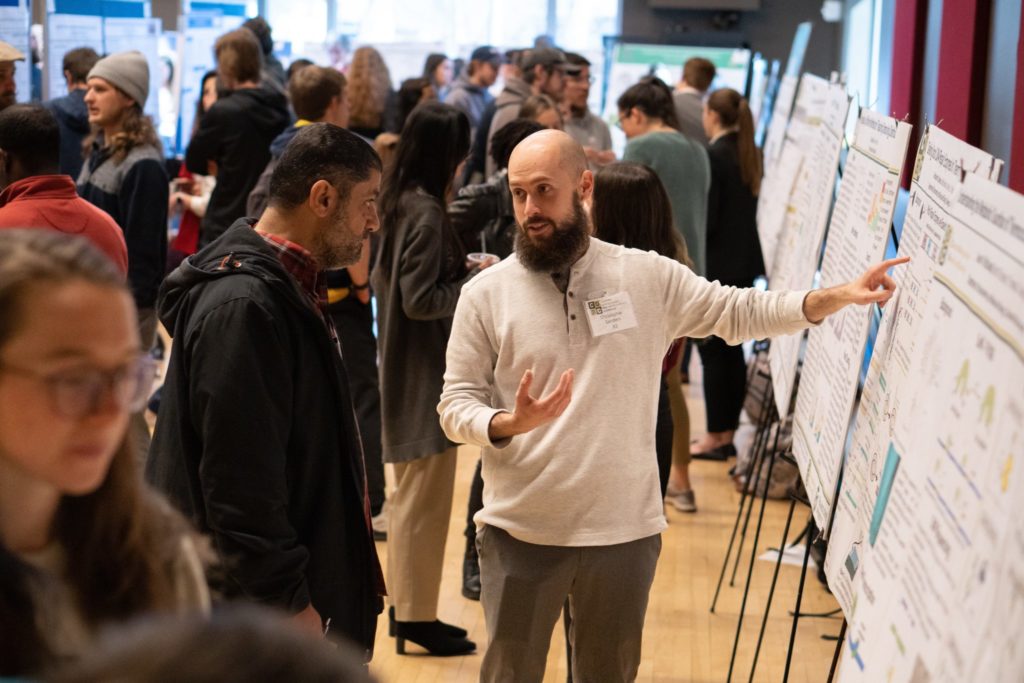
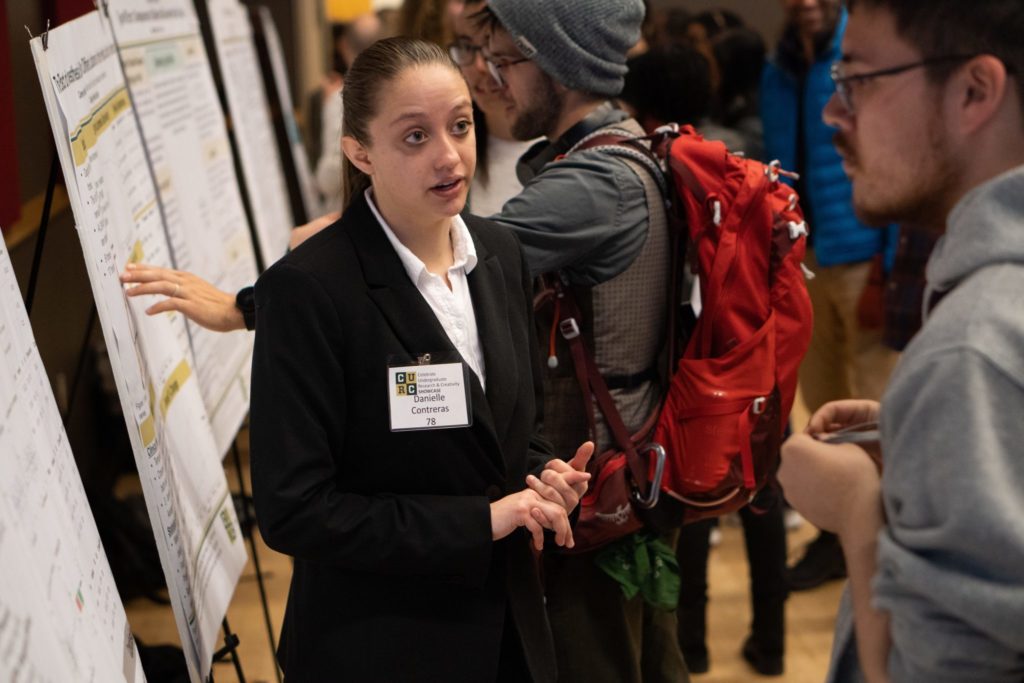
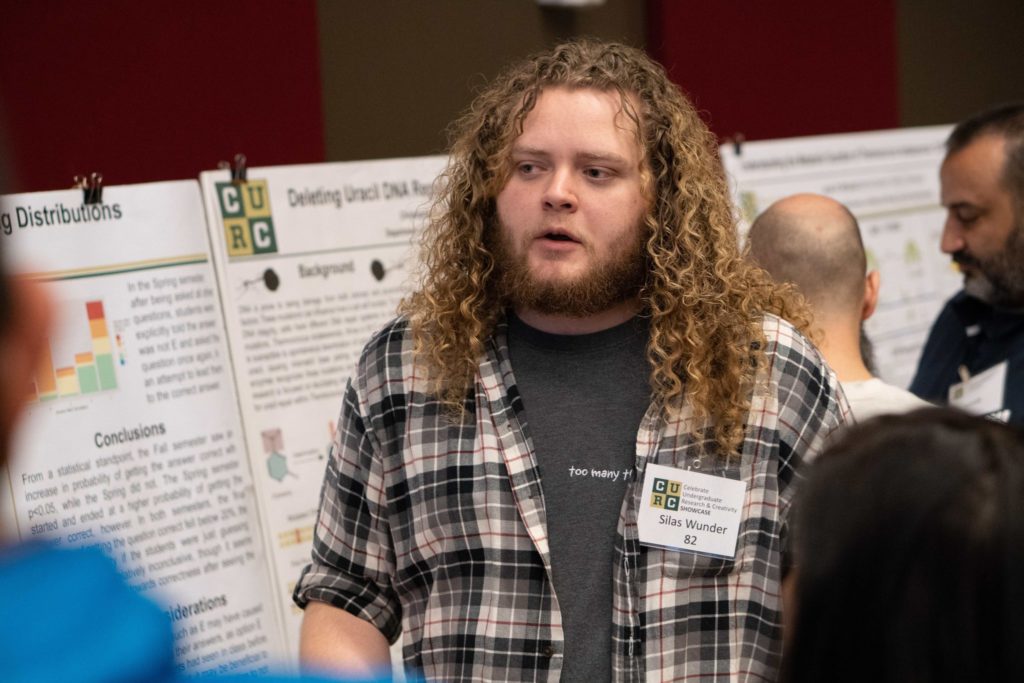
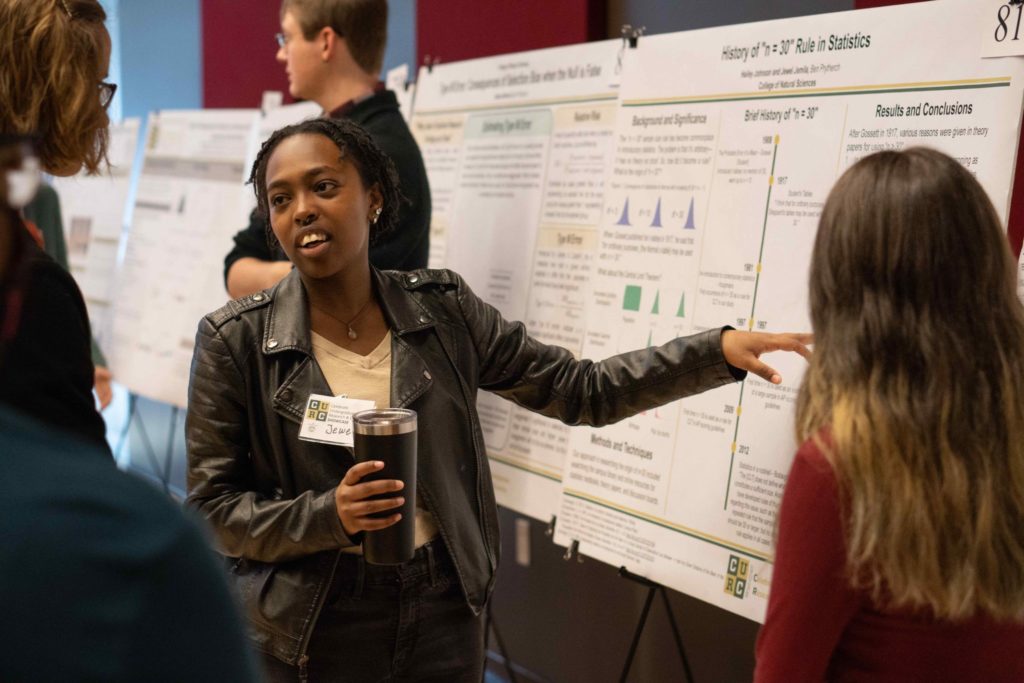
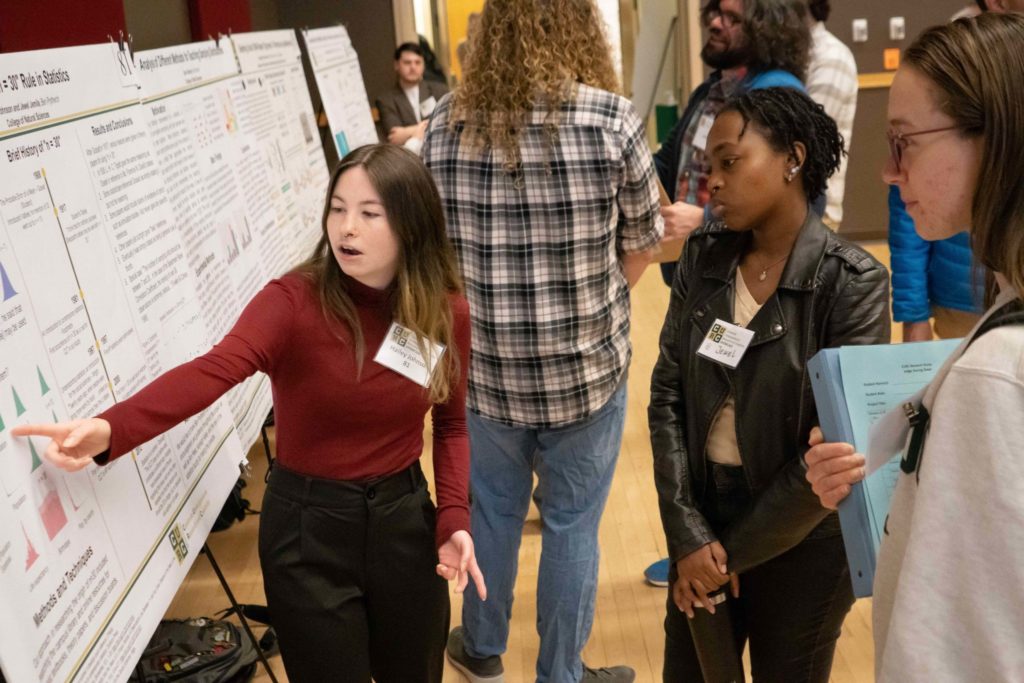
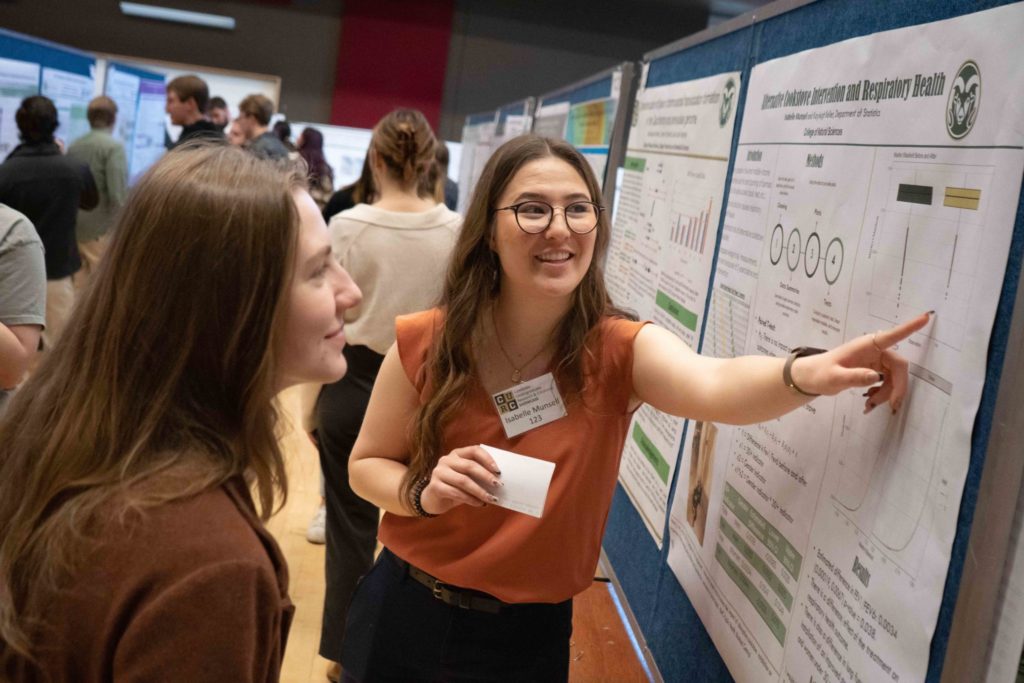
For students studying statistics, undergraduate research is a valuable, hands-on chance to learn how to use statistics to support real research with real-world outcomes.
Statistics, like all foundational sciences, can be applied to a myriad of subjects, supporting other foundational research as well as helping understand applied problems. From analyzing the behavioral habits of drivers for vehicle trajectory prediction to biostatistical studies on respiratory health in children related to cookstoves, statistics can have a prodigious impact on our societies and our wellbeing.
The Colorado State University Department of Statistics took this cause seriously, launching a brand-new summer research program last year that offered 10 structured, undergraduate research projects to students in the department. The first iteration of the program culminated on April 20th, 2023, at Celebrate Undergraduate Research and Creativity (CURC), an annual university-wide symposium honoring undergraduates’ work, where the participating statistics students presented their research findings.
Developing the research program
In concurrence with the CSU College of Natural Sciences’ “Go Boldly” Strategic Plan, which seeks to expand access to high-quality undergraduate research opportunities, the Department of Statistics put in the leg work to ensure the summer research program offered structure, learning opportunities and real-world experience to the participating students.
“We met with our students as regularly as was needed and worked with them pretty closely,” said Ben Prytherch, a senior instructor and advisor in the department, and co-founder of the summer research program. “But, of course, one of the points of all this research is to get out there and work on something where you don’t know what the answer is, you don’t know if it’s going to work the way you think, you don’t necessarily know everything and you go out there and you figure it out. That’s the experience that is really hard to deliver in the classroom.”
The 10 projects included creating a simulation framework for generation of neuron spike trains, a historical study on where popular textbook advice about the sample size of 30 came from, an analysis on the effect of management practices on animal welfare, and developing an efficient detection algorithm for abnormal vehicle trajectories, to name a few.
“I am very interested in understanding the world around us, especially the things that we may think we already understand,” said McKenna Hogan, a senior in statistics. “Knowing the ‘why’ behind things that seem mundane or day-to-day, like driving in traffic, really fascinates me. The vehicle trajectory study was perfect for this because I drive in traffic all the time. It was fun to be able to apply my skills to something that helped me understand a concept that people might wonder about, like driving patterns or traffic.”
Hailey Johnson, a junior in the data science program, worked on the historical study of n=30.
“N = 30 has become a sort of magic number for a sample size to be considered large,” she explained. “This can be problematic, because with less normal populations, you’ll usually need bigger samples for the means to look normal. So, why are textbooks and even the AP exam using this, when there’s no specific reason behind 30? Where did this come from? To try to answer this, we dug through textbooks and publications to build a timeline of ‘n=30.’”
Experiential learning and problem solving
One of the biggest takeaways the faculty in statistics were hoping to impart on their students was the value in problem solving and decision making.
“When you finish college, you won’t have a teacher standing over your shoulder saying ‘Correct. Incorrect. Oh, how about you try this?’” said Prytherch. “We’re trying to teach them to learn how to be a person who can learn. In our discipline there are usually many ways to approach a problem and the choice of analysis method isn’t always obvious.”
Johnson said her biggest takeaway was the importance of reasoning in statistics.
“When I took my first statistics class, each new concept was fun because there was a pattern and a solution,” she said. “However, in real-world applications, more care should be involved than ‘n > 30 means you can assume normality.’ The problem with sticking to these easy patterns is that we can be led astray by not being careful with real data, and our conclusions could be false or misleading … I feel more confident for postgrad with this [experience] under my belt.”
Hogan said her biggest takeaway was discovering how many directions a statistical project can go.
“It is important to try to predict what analyses will give us the most information about what we care about,” she said. “This experience helped me prepare for life after school because it was my first time getting a dataset, and not being told exactly what to do with it. In my classes, when we are given datasets, we are also told what specific things to look for and analyze. This was my first time choosing what to analyze myself, and what things I thought were important to our research questions.”
Her other takeaway?
“Statistics is so cool!” she said. “I encourage anyone who is an analytical thinker and is curious about the world around them to look into a statistics major or minor, or even just take a few data science courses online. A lot of people are scared by the fact that stats is so math-heavy. In reality though, when applying math concepts to real-life things around us, math can make so much more sense than before – and statistics is all about understanding the real-life things around us.”
After the success of the first statistics summer research program, the department is excited to keep the opportunity rolling on an annual basis.
“My hope and expectation is that not only does it continue each summer, but that it grows in terms of the breadth and the quality of the projects we’re able to offer,” said Prytherch.